The Great Canadian Cuisine Hunt
Ever wondered what scrumptiously delicious food Canada has to offer? Explore the country with our interactive map, where each pin hides a new, tasty delight.
Make sure you hunt carefully, because we've hidden some fantastic offers in there too!

Deliciously Tempting Canadian Food
Canadians love food. But even though the maple leaf’s famous silhouette has pride of place on Canada’s flag, the nation boasts far more delicacies than just maple syrup. Rivers teeming with fresh fish branch into each of Canada’s far flung territories. Mind-blowing fusion foods grace every street corner in the buzzing city metropolises. Thanks to the lushness of its landscapes and the uniqueness of its peoples, Canadian food is as diverse as it is distinctive. And not to mention delicious.
If you’re planning your dream holiday to Canada, make sure your taste buds get a good share in the action with our interactive map of where to find the best of Canadian food.
Famous Canadian National Cuisine
As Mystique from the popular food blog Chef Sous Chef comments, “"The Canadian food landscape is as genuine, diverse and proud as the people of this country. Each province's contribution to the food scene of Canada is a mosaic that when put together form a united and unique palate of flavours."
Here is our run-down of the most famous of Canadian cuisine and where you can find some of the country’s more unusual regional specialities.
-
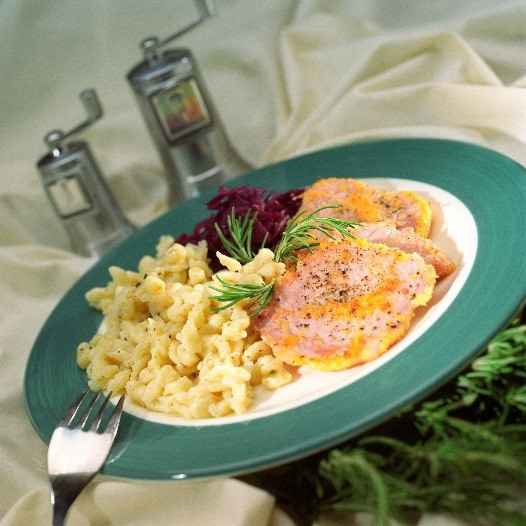
Peameal bacon
This lean, pork loin bacon is wet-cured for flavour and rolled in a crunchy crust. Originally the crushed yellow pea coating was used to help extend the bacon’s shelf life, but today peameal bacon is covered in cornmeal for an irresistible bite. It was William Davies, a bacon curer from Toronto, who was first credited with the food’s creation. He made it to sell to England, which was then experiencing a shortage in bacon.
Grilled in medium slices, the centre is left slightly rare, with a crispy exterior for a melt-in-the-mouth taste. Toronto’s St. Lawrence Market is world-renowned for its peameal bacon sandwiches, particularly Carousel Bakery’s ‘World Famous Peameal Bacon Sandwiches’. -
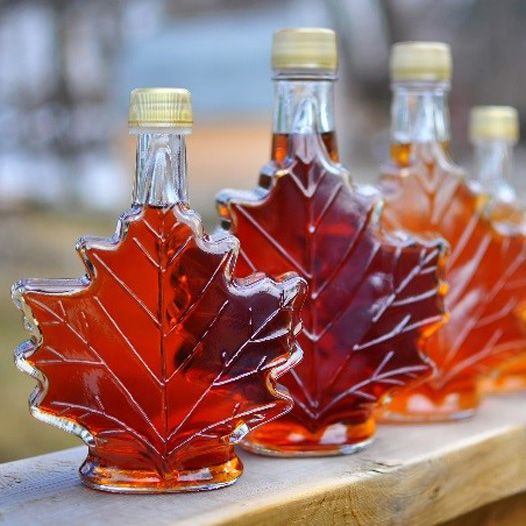
Maple syrup
Maple syrup is tantamount to a national symbol of Canada. Derived from the sap of sugar maple, red maple and black maple trees, this syrup is unique to cold climates, like those found during Canada’s winter season. Maple trees store starch in their trunks and roots in the lead-up to winter, which is then converted into the sugary substance that creates maple syrup. The trees are tapped by drilling holes into the trunks before the sap is heated it to evaporate most of the water, leaving a delicious syrup.
The practice of collecting maple syrup was begun by the First Nations people of North America, before being adopted by European settlers and proliferating through Canadian society. With Canada producing 85% of the world’s maple syrup – 75% of that from Quebec – it is undeniably a Canadian food through-and-through. -
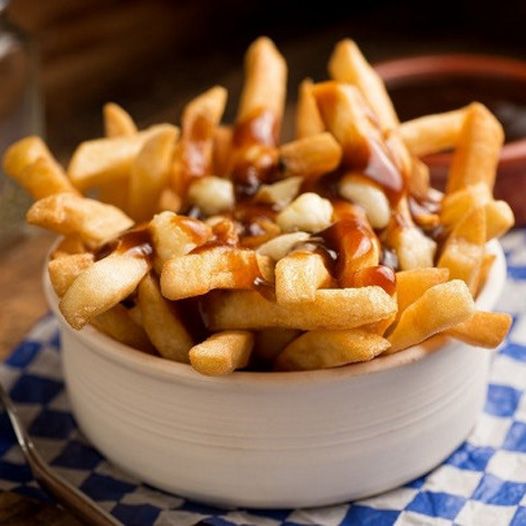
Poutine
After maple syrup, poutine has to be one of the best-known dishes in Canada: you can’t visit the country without sampling this unusual meal. Consisting of French fries, cheese curds and a meat gravy, the meal has become something of a fast-food delicacy.
Many small towns in Quebec claim to be the birthplace of poutine, but there is one popular origin story which has stuck. In Warwick, Quebec, a diner asked Chef Fernand Lachance in Le Café Ideal for a handful of cheese curds on some fries, to which the chef replied, “ça va faire une maudite poutine!” (“It will make a damn mess!”) Today, you can find poutine everywhere from street trucks to restaurants such as Smoke’s Poutinerie. It might look messy, but it certainly tastes good! -
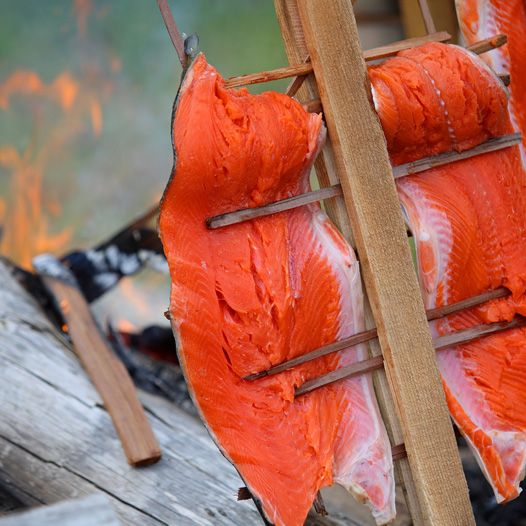
Salmon
Native to the tributaries and oceans of Northern America, salmon is widespread in Canada. In fact, the quality of the fish is so high that it has become one of the country’s culinary icons. The salmon of Canada are also important in their role in the food chain, supporting the bears that you may be keen to spot as part of your Canada bucket list. Canada is famous for being a source of fantastic Pacific and Atlantic salmon, including varieties such as sockeye, pink, chum, chinook and Coho.
Seek out a taste of Canadian salmon for yourself and you will discover a bounty of options. First Nations roast salmon on cedar fires, Japanese restaurants serve it ‘tataki’ style – a quickly seared, rare fillet - others bake it. Victoria, BC is one great place to try salmon, with restaurant favourites like Il Terrazzo’s open-flame-roasted salmon and Bubby’s Kitchen’s West Coast Bennie — poached eggs on a grilled herb biscuit, served with homemade hollandaise sauce and smoked wild salmon. -
Pemmican
Deriving from the Cree word pimîhkân, which itself is derived from the word pimî, or fat, pemmican is an energy bar like no other. Somewhat reminiscent of jerky, pemmican is a bar made of dried and powdered meat – usually bison or moose – mixed with melted fat, berries and other ingredients.
Full of energy, it is often eaten by hikers taking on the impressive mountains of British Columbia and other areas to keep them going throughout the day. To try pemmican, visit the towns of Prince Rupert on Kaien Island or Port Hardy on Vancouver Island, where the First Nations heritage of the area is rich. Alternatively, venture on a Wonders of the Spirit Bear holiday, where you can eat at the Kitasoo / Xaixais First Nations-operated Spirit Bear Lodge. -
Timbits
Doughnut lovers look no further! Timbits are indeed the holy grail of doughnuts: a perfectly bite-sized piece of heaven taken from the middle of the famed Canadian coffeehouse doughnuts at Tim Hortons. These bite-sized doughnut holes are available in various flavours like apple fritter and blueberry.
One of the first things you should do when visiting Canada is pop into a Tim Hortons – it’s a rite of passage, and it’s one of the things Canadians miss the most when away from home. When you try Timbits, the reason will very quickly become clear…
-
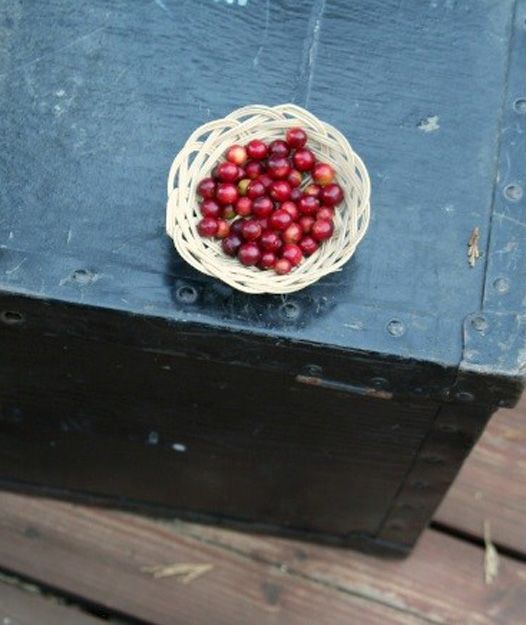
Chokecherries
Their name may sound daunting, but chokecherries are a family favourite in Canada, and for good reason. Many a Canadian will tell childhood memories of going out into the rolling countryside with their grandparents, foraging for chokecherries before spreading them out to dry.
These cherries, also known as wild black cherries, are found in Manitoba, Saskatchewan, British Columbia and Newfoundland. Related to plums, peaches and apricots, these sweet and juicy fruits are a favourite in jams and wines. Visit the ‘Not So Hollow’ farm in Ontario, which nurtures native plants including these juicy fruits.
-
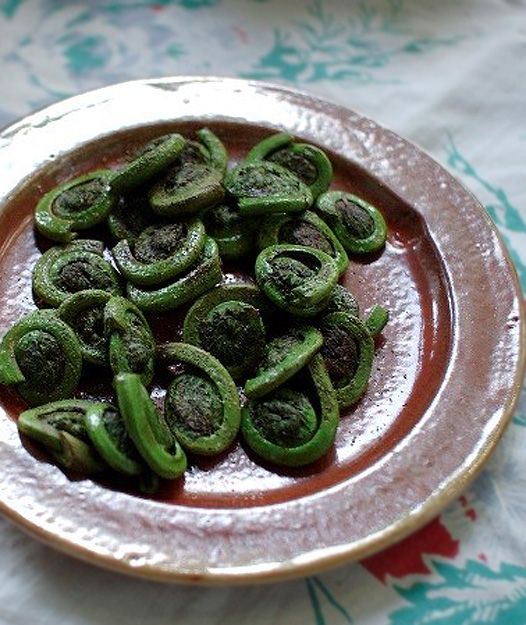
Fiddleheads
Another foodstuff that Canadians might snack on while out in the great wilderness are fiddleheads. The curly, edible shoots of fern are consumed seasonally across the country, both as a snack and as a healthy side dish.
Originally, Native Americans in the area picked the fiddleheads, but today they are used in everything from North American cooking to Nepalese cuisine. High in potassium and vitamin C, steamed fiddleheads are as nutritious as they are delicious.
Regional Canadian delicacies
Canada is an incredibly diverse country, from Quebec’s French history to the large Japanese communities of the west coast. This same phenomenon is also true of the country’s food.
Around Canada, regions and provinces boast their very own speciality dishes, and some of these have even gained national and international acclaim. Whether you’re visiting the city of Toronto or the Yukon Territory, you’re sure to find some very special flavours to sample in Canada! To find out about the best of them, read on...
Ontario
-
BeaverTails
Type in ‘#beavertails’ on Instagram and your phone will be flooded with over 30,000 images showing off one of the country’s best-loved sweet treats – BeaverTails pastries. This typically Canadian name describes a lip-smackingly sweet treat made of something similar to doughnut mixture, served in the shape of a beaver’s tail.
The original recipe for this pastry delight was passed down in Grant Hooker’s family for generations until, in 1978, he and his wife Pam introduced it to a wider audience, opening their first BeaverTails outlet in Ottawa. Today, you can find BeaverTails carts on many Ottawa streets, serving the pastries adorned with sugar, Nutella and countless other sweet additions. Canada’s answer to France’s crepes, BeaverTails can now be found in almost every corner of Canada - but Ottawa is their home.
-
Niagara Ice Wine
There are few experiences as refined in life as enjoying a perfectly-chilled glass of white wine, and Ontario takes this luxury one step further. The Niagara Peninsula is famous for producing ice wine, a unique form of wine created by frozen grapes at Niagara-on-the-Lake. When the temperature drops below -8 degrees Celsius, the grapes and the water inside them freeze, but the sugars do not, creating a nectar-like, fruity, and delectably rich dessert wine.
Inniskillin is renowned for popularising this delicious beverage, having won the prestigious Grand Prix d’Honneur at the elite Vinexpo during the nineties. There’s no better way to satisfy your inner sommelier than to visit the historic estate and enjoy a guided tour of the beautiful winery in Inniskillin.
-
Sushi Pizza
Ingeniously fusing two of North America’s favourite foreign cuisines – pizza and sushi - the sushi pizza was created in 1992, allegedly by a chef at Atami Sushi Restaurant in Montreal. Now, however, it has become one of Toronto’s signature dishes.
These mini pizza-like creations feature a fried rice cake topped with spicy mayo, sliced avocado and fresh fish such as salmon, tuna and crab. With endless options available, this is fusion food at its finest. Try it for yourself at Kawa Sushi, one of Toronto’s most highly regarded restaurants which devotes an entire page of its menu to this quirky delight!
-
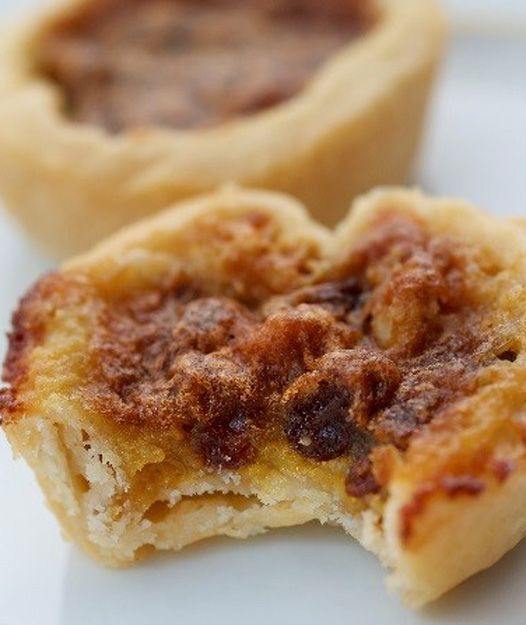
Butter tarts
A staple of Canadian cuisine, the butter tart goes back as far as the turn of the century. This quintessential dessert is made of a butter, sugar, syrup and egg mix held inside a crisp, flaky pastry case. More traditional chefs believe that no additional ingredients should be added to the tart, whereas others take a more creative approach, adding pecans, raisins and more.
The people of Ontario are proud to call the butter tart their own, so you will find delicious interpretations of the recipe all across the region. But, if you want a real sense of this culinary favourite, visit Kenilworth. Here you will find the Butter Tart Trail, a string of 18 bakeries selling scrumptious versions of the renowned pastries.
Quebec
-
Tourtière
Tourtière, at its most simple, is a mouth-wateringly savoury meat pie. Though generally made of pork, onions and spices, this pie is a flexible and creative affair, leaving countless options open to experimental cooks. Whether it is bonus meats or flavours such as cinnamon and cloves, tourtière is a hearty dish that celebrates spontaneity. As long as it goes in a pie crust, it qualifies.
This dish is another traditional food of the Quebec region – it’s been associated with Saguenay since 1970, but the recipe for the pie dates back to 1600BC. The historic Aux Anciens Canadiens is a fantastic place to try this dish for the first time.
-
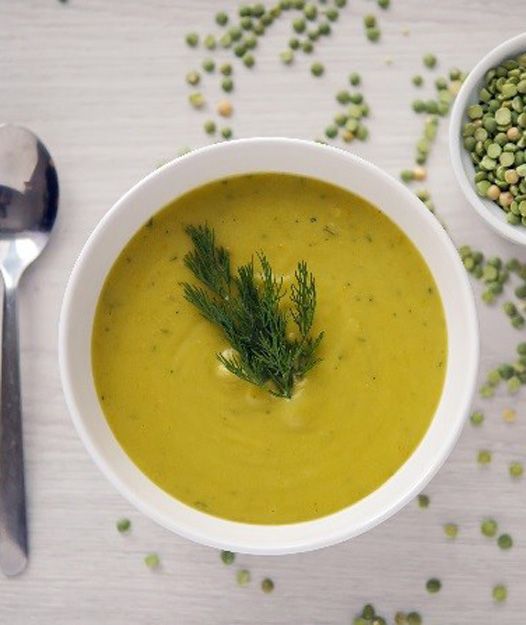
Split pea soup
Did you know that yellow split pea soup originated in Quebec? The dish, better known as Habitant soup, is made up of dried yellow split peas and ham bone or smoked ham hock, and is highly popular nationwide.
This dish is the perfect winter warmer for the colder months, but is also enjoyed as a light lunch year-round. Countless restaurants in Quebec City serve delicious split pea soups. Visit the up-market Chez Boulay Bistro and you are sure to find this soup in rotation.
-
Montreal smoked meat
A bit like pastrami, but with a noticeable pepper kick, Montreal-style smoked meat is one of the most popular dishes in the city. This brisket-based, marinated meat is a labour of love, taking hours to prepare and slow-cook for the perfect texture and flavour.
If you’re a fan of smoky flavours and melt-in-the-mouth tenderness, you will love Montreal smoked meat. To try the original product like the locals do, visit Schwartz's Montreal Hebrew Delicatessen, where for over eighty years the perfect smoked meat sandwiches have been created.
-
Montreal bagels
Montreal bagels are set apart from the American version by poaching in honey-infused water and cooking in a wood-burning oven for a sweeter taste and crispy texture. Visit Fairmount Bagel to try this traditional breakfast food for yourself. Fairmount Bagels has produced famous baked goods since 1919, when it was the first bagel bakery in the city.
There has long been dispute between Canadians and Americans over who has the best bagels. Check out Destination Canada’s video to see how they compare!
British Columbia
-
Nanaimo bars
Nanaimo bars were created in the B.C. city of the same name, in a beautiful coastal location on Vancouver Island, and have become much-loved throughout the country. Somewhere between a fridge cake, a tiffin and a chocolate bar, these indulgent treats consist of three layers: a crunchy base of graham crackers and chopped nuts, a custardy middle part, and a chocolate top.
These days cafes sell Nanaimo bars in all different flavours, from mint to mocha and, of course, maple. To try the real thing visit Nanaimo where you can follow the city’s Nanaimo Bar Trail to sample the delicious interpretations of the Nanaimo Bar around the city.
-
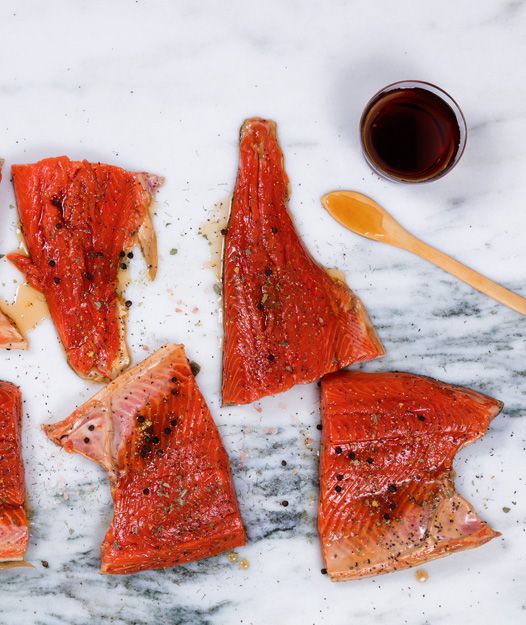
Salmon candy
British Columbia has garnered a reputation in recent years for its fusion of North American and Asian flavours. More broadly, this comes from a spirit of experimentalism that defines the cuisine of the region.
B.C. smoked salmon candy is the perfect example of this. The freshly smoked fish is glazed with maple syrup creating a smoky, salty, sweet flavour which locals testify is rather addictive! To taste the unusual snack for yourself, try some by Hardy Buoys, based out of Port Hardy on Vancouver Island. This home-grown company is the biggest employer in the city, and their products are stocked in stores across the country.
Alberta and Saskatchewan
-
Double-baked potatoes
The Keg Steakhouse is not only famous for its prime cuts - the twice-baked potatoes that accompany their steaks have become very popular with locals and visitors alike. That’s because these are not your regular baked potatoes – they hold diced bacon, sour cream, onion and garlic puree in a mouth-watering mixture inside the extraordinarily crispy skins.
The Keg Steakhouse has outlets across Canada, and was established in Vancouver in 1971, but today their potatoes are particularly well-loved in Alberta. So, if you’re visiting any area in Alberta, you must try out this moreish dish.
-
Steak
Avenue Calgary claims that “no single food is more quintessentially Calgarian than a perfectly grilled slab of steak.” Indeed, when people picture Alberta, they often imagine impressive mountains, luscious foothills and Alberta beef. The delicious, tender steak is one of the area’s most highly sought-after foods, and is served at restaurants across the province.
If you’re looking for a dish where beef is the star ingredient, then a traditional meat ‘n’ potatoes steak house is in order. Calgary is home to many of these eateries, from traditional Canadian fare to Brazilian fusion styles. The Smuggler’s Inn is a great choice for those looking for a traditional choice or, for something slightly different, head to Modern Steak where local Alberta meat is transformed in their tartare bar.
-
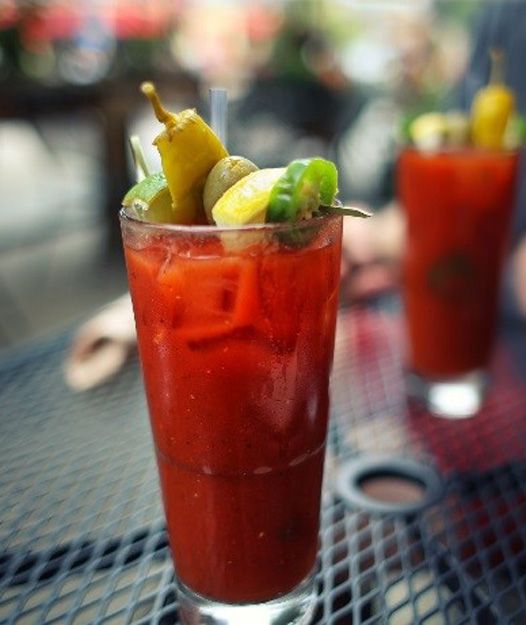
Caesar
Not to be confused with the salad or a Bloody Mary, the Caesar is a unique drink that was invented in Calgary in 1969 by restaurant manager Walter Chell, and has since become one of the most popular beverages in the country. The cocktail’s main ingredients are tomato juice, clam broth, vodka, Worcestershire sauce, hot sauce and a salted rim – often garnished with celer
Today, over 350 million Caesars are consumed each year, so it will be easy to get your hands on one.To sample the various flavours that have been added to the traditional Caesar, head to Boomtown Pub & Patio in Calgary to drink everything from an Applewood Smoked Bourbon Caesar to The Walter “Works” Caesar, which features the addition of horseradish, lime, tabasco and olives!
-
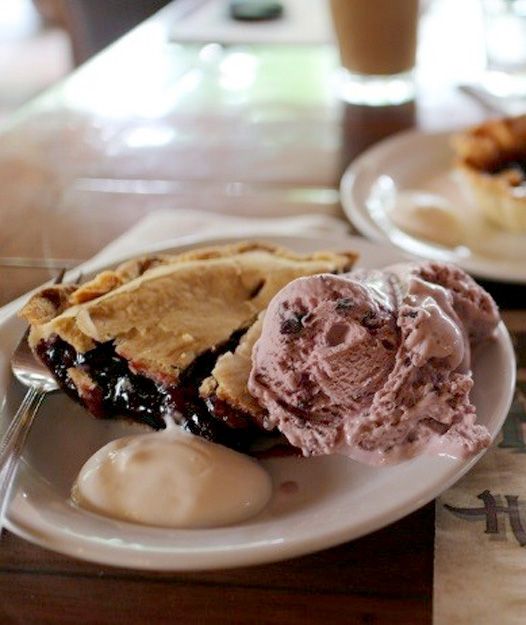
Saskatoon berry pie
This delicious dessert comes straight from the prairies of Canada. These are sweet, double-crusted berry pies, baked until golden. Although the berries are grown everywhere from western Ontario to British Columbia and the Yukon, the pies are particularly popular in the Saskatchewan city that shares the berry’s name.
The fruit are today rather difficult to come across, so any opportunity to try the berry pie is one to be taken. Deliciously crispy and wholesome, this is the perfect winter warmer to try after a long day exploring the prairies. Visit any farm shop, such as the Riverbend Plantation and you will be able to try the classic dessert for yourself.
The Maritimes
-
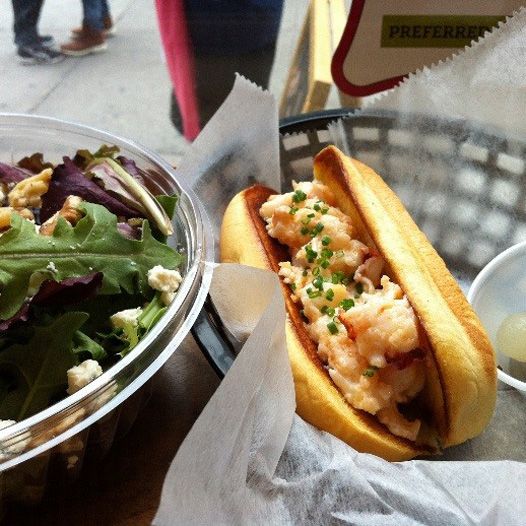
Lobster rolls
While lobsters are served all across Canada, owing to their bountiful presence in the country’s clean waters, Nova Scotia is particularly famous for its love of the lobster roll. A lobster roll is essentially a sandwich filled with lobster meat, soaked in butter, and is a sure-fire summer staple in the Maritime Provinces.
In Nova Scotia, they appear in numerous forms – in burger buns, pitas and baguettes – often served with crisps and dill pickles. All of this makes for a refreshing yet satisfying snack. To try some of Nova Scotia’s best lobster rolls, head to Halifax where you will find The Shack Oyster Bar, whose freshly shucked or steamed seafood simply bursts with flavour.
-
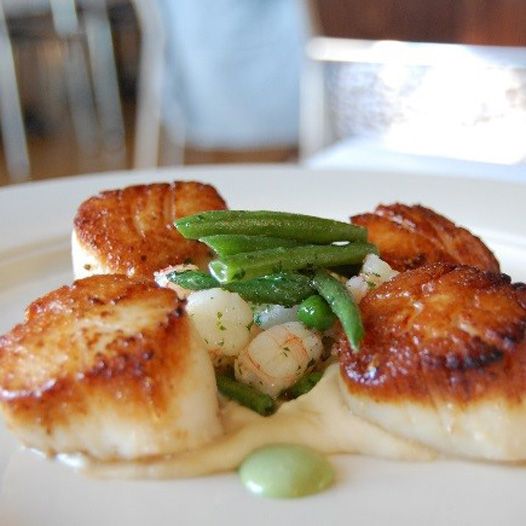
Scallops
Where there are spotless seas there are scallops, and off the shores of Canada’s Maritimes live the Eastern Canada sea scallop subspecies, which can grow up to 20cm in size. Digby in Nova Scotia is particularly well-known for its scallops, which are generally regarded as being second to none.
The town even hosts an annual Scallop Days Festival in the first week of August, celebrating the maritime heritage of the area with themed activities such as scallop shucking contests, art exhibitions and a parade. Head to Mariner’s Landing to taste their scallops cooked three ways, or visit Fundy Restaurant for perfectly-cooked specimens right at the dockside.
-
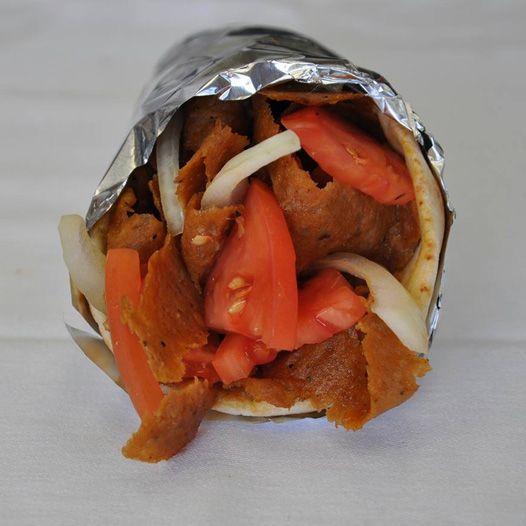
Nova Scotia Donair
The Nova Scotia Donair is a popular late-night street-snack, made of spicy ground beef, tomatoes, raw onions and a sweet sauce, all inside a moist pita. Similar dishes such as the shawarma, doner kebabs, and gyros use lamb, but the unique donair features beef.
This satisfying street food is a must-try at any time of the day or night, and, while most late-night eateries serve donairs, it is King of Donair that is said to have invented the Nova Scotia donair in the 1970s, and is well worth a visit.
-
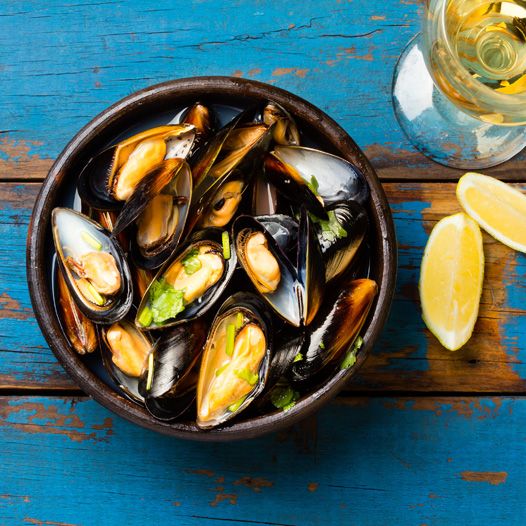
Prince Edward Island Mussels
Prince Edward Island is famous for its waters and climate which give rise to some of the best produce in the world, from potatoes to mussels. The mussels cultured in the cool water surrounding the island have, in fact, become famous world-wide for their purity.
Suspended in mesh stockings from ropes in the water, these mussels never touch the floor, creating ideal conditions for growth and giving the mussels a sweet taste and a tender, plump consistency free of ocean grit.
Ayngelina Brogan from Bacon Is Magic says, “Maritime chowder is one of the iconic foods of the East Coast of Canada and every restaurant has to have one as it's common to have a cup of chowder and half a sandwich for lunch. Similar to chowder in Maine it is cream based but the ingredients can vary.”
Newfoundland and Labrador
-
Iceberg Beer
If you like your beer well-chilled, a trip to Newfoundland is in order. Here, they take ice cold beer to a new level. Thousands of people flock to Newfoundland each year to try out the rare product that is iceberg beer. This is more than just a brand name – the beer is actually made from the water of icebergs which can be hundreds of thousands of years old.
Quidi Vidi Brewing Co. brew their extra-cold lager with 25,000 year old iceberg water harvested from the local area, creating a clear golden colour and a gently hopped, refreshing taste. To try this truly unique beverage, visit the brewery itself, or visit a local pub, many of which stock the lager.
-
Cod Tongue
Cod has historically been rich in the region of Newfoundland and Labrador’s food scene, being the main food staple for the province for many years. Today, they are a treat for tourists and locals alike. Crispy and fried, cod tongues are often served as an appetiser before main meals.
This local treasure is not literally made of the fish’s tongues, however, but from a small muscle in the neck. Visit the main city of Newfoundland, St John’s, where practically every restaurant offers this special delicacy, or, for something a little different, Gros Morne National park to sample this fishy treat in truly stunning surroundings.
Yukon and the Northwest Territories
-
Sourdough flapjacks
Did you know that sourdough is very popular in the Yukon Territory? Interestingly, it’s not just sourdough toast to accompany your hearty brunch that you can try - here, sourdough is made into flapjacks too.
These flapjacks might look like pancakes, but they pack more of a punch in terms of slow-release energy. They were eaten by prospectors ‘on the trail’, after all. They often used instead of bread at breakfast, as a delicious alternative... While sourdough pancakes are easy to come by in other areas of Canada, Yukon has maintained its Gold Rush tradition, and even celebrates a Sourdough Rendezvous festival every year.
-
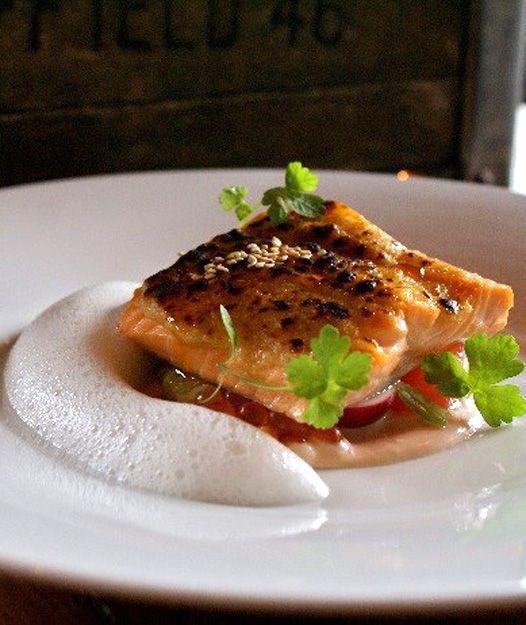
Arctic Char
Arctic char is indigenous to the northern regions around Canada and is one of the most widespread species in the Arctic area. This freshwater fish is found in Manitoba, Nunavut, Ontario, Quebec, Nova Scotia, Prince Edward Island and the Yukon Territory, mostly residing in deep glacial lakes.
Although Arctic char resembles a salmon, it is more closely genetically linked to trout. One of the main benefits of eating and cooking with Arctic char is that it has been confirmed as an environmentally-sustainable choice. Better yet, its taste is rich, often cooked with a crispy skin to complement the flaky texture. You can enjoy this versatile fish cooked in all sorts of ways – be it stewed, baked, or smoked.
-
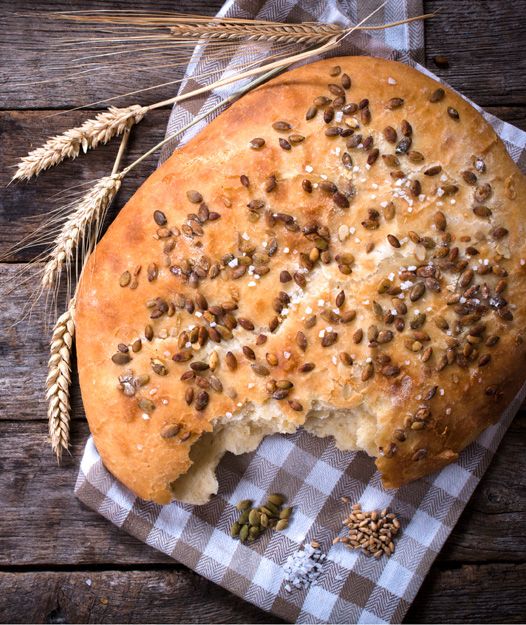
Bannock
The bannock is a variety of flat quick bread and can be cooked many ways. You can sample the bread across Canada but to get a real taste for the meal, you need to travel north. The word ‘bannock’ actually stems from the Old English word ‘bannuc’ which meant a morsel, and derives from Scotland! Food Day Canada explains that bannock was “the ultimate comfort food to the fur traders, voyageurs and early settlers of Western Canada.”
However, bannock was a First Nations dish in the beginning, and still has strong ties to the indigenous cultures of the Northwest Territories. Then, recipes were made of whatever resources were available, with ingredients such as maize, roots, tree sap and leavening agents. Meeting the local indigenous population is the perfect way to try traditional hand-made bannock.









